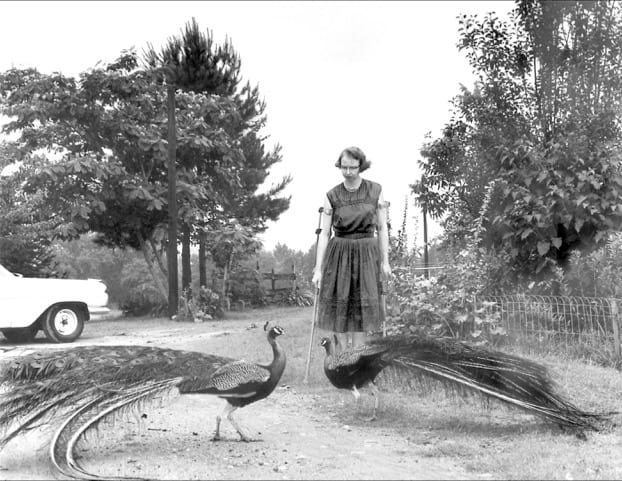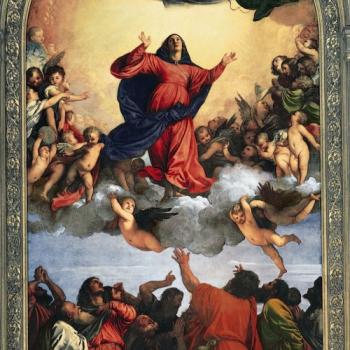The word “postmodernism” seems to take on a sort of univocal and monolithic reference in our conversations. I recognize that my own contribution often vacillates between attempting to clarify and unintentionally obscuring the topic. What could be beneficial, I think, to a continued study of (study in?) postmodernism is a teasing out of a few distinctions in terms of the continuity and difference between modernity and postmodernism. I’m going to wade into some troubled waters here, and I hope that our friend the Postmodern Papist might provide any needed aid.
Perhaps we can start with an important distinction made by one the foremost commentators on postmodernity, James K. A. Smith. He argues that one must not be tempted to identify what is popularly called postmodernity with what is more aptly called postmodernism. The former is the aggregate of cultural and artistic trends that have been, for the most part, the center of our discussions. The latter is indentified with the disparate and often times incongruent writings of several philosophers and literary figures (e.g., the late Heidegger, Gadamer, Derrida, Lyotard, Marion). What Smith asserts (and I think he’s right) is that much of the art that fancies itself postmodern is really the effect of a trickling down of the philosophical and political ideas of modern philosophy. Accordingly, Smith suggests that contemporary culture and art remain in the throes of modernity and that postmodernism is at best a fringe factor in popular culture, though it remains alive and kicking among academics.
When we consider what contemporary art offers (perhaps a quick perusal through the pages of Kuspit’s The End of Art may serve as a reminder), we often discuss the manner in which the bastions have been razed, in which egalitarianism is emphasized (it’s all equally art!), in which the abstract or distorted dominates over representation, in which the commonplace replaces solemnity and majesty, in which appearance and reality are divorced, in which art has become domesticated through and through, etc. But is anything of this really postmodern in the sense that postmodernism proceeds? It would seem not. Rather, it seems that the abstract, geometrical and mechanical world of Descartes, the flippant and capricious moral and aesthetic theory of Hume, the anti-hierarchical theories of Locke, the transformation and commercialization of products into commodities in Adam Smith, and the divorce of appearance and reality in Kant have been recast in several popular artistic movements of our contemporary age. When we look at Jose Merello’s Mujar y Mancha Roja or the new Catholic cathedral of Los Angeles or listen to our favorite Radiohead song, are we experiencing postmodernism or are we just experiencing the residual presence of 16th, 17th, and 18th century ideas?
In considering the manner in which modernity led its revolt against the aristocracy, realism, political and religious hierarchies and institutional moralities of the medieval and early Renaissance periods, perhaps there is little difficulty in seeing the egalitarianism, relativism and anti-structuralism of postmodernity as just a cultural and artistic extension of modernity itself. Really, I think we discern in the so-called “postmodern” art the same revolt that inspired the philosophical and scientific efforts of the moderns to dismiss the conventions and seeming arbitrary standards of their predecessors.
What then is postmodernism if it is not what we call postmodernity? Here it may be best merely to characterize rather than to define, for postmodernism is not a uniform movement. Put simply, postmodernism is “incredulity toward [the] metanarratives” of modernity (Lyotard). Hence, the manifold of faces postmodernism unveils. Unpacking Lyotard’s line a bit, postmodernism is not a revolt against modernity (as modernity was a revolt against a rigid Scholasticism), but a perpetual and reflexive critique of the audaciousness of the modern project. This critique is an ideational and cultural pruning, so to speak, rather than an outright uprooting. Whether it is Nietzsche’s exposure of the prejudices of modern morality (esp. that of Kant and Schopenhauer), Gadamer’s emphasis on the hermeneutical problems of modern science, or Marion’s critique of the modern deity (read: idol), postmodernism always leaves at least one branch on the trunk of modernity on which to perch.
What would the artistic recasting of postmodernism look, sound or feel like? It’s hard to say. Not only has there been too little time for these ideas to “trickle-down,” but also we would not be dealing with as radical a shift in cultural and artistic trends as we witnessed in the tulmutous and interruptive transition from “premodernity” to modernity. My own feeling is that the art of postmodernism, like the movement itself, will be so diverse, so cacophonous and so independent that no popular movement could ever be called “postmodern” in the proper sense. One need only look to the gulf between postmodern theories, such as those of Foucault and Rorty, to get a feel for it.












